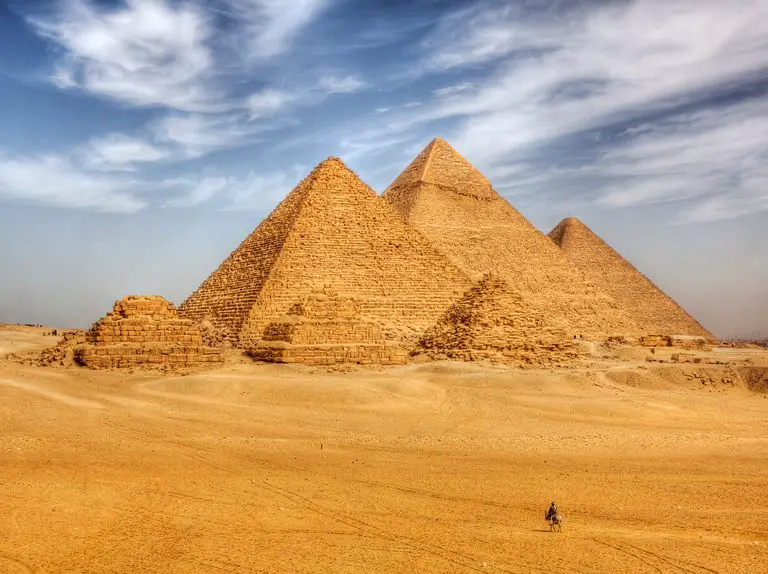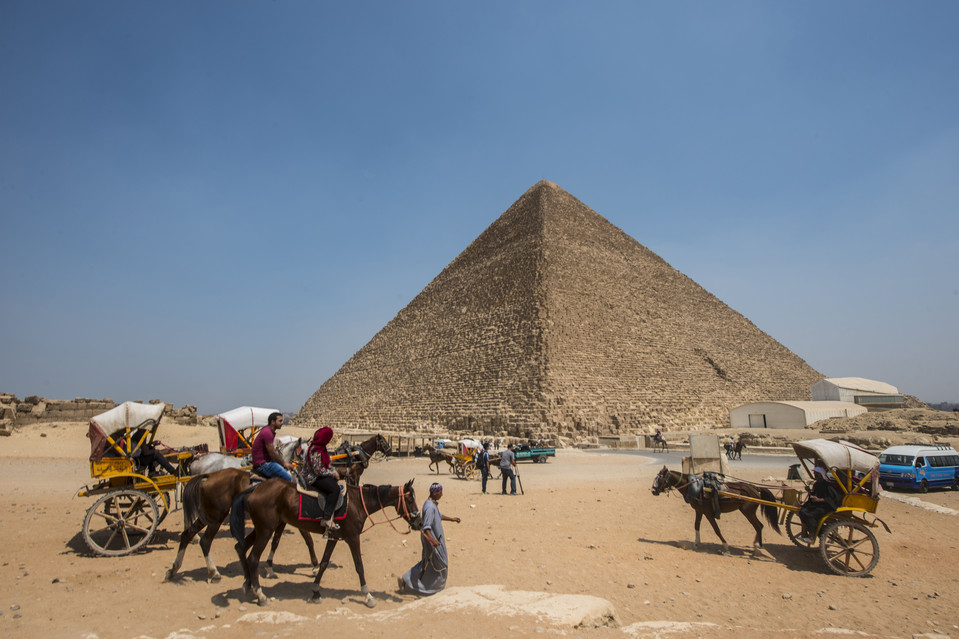The Pyramids at Giza’s Ageless Beauty. The Pyramids of Giza, which belong to one of the preserved wonders of the world, are one of the most famous historical monuments on our planet.
In the ancient past, this place used to be a monumental burial ground for important figures of the society of the time, especially the monarchs themselves.
Probably the most famous is the so-called Cheops’ (or Khufu’s) pyramid, which rises to a height of less than 140 meters.
To this day, scientists are still debating how such colossi were actually built more than 4.5 thousand years ago. Allegedly, cylinders and systems of levers were used to stack the stones, which then formed a giant weighing up to 6 million tons.
Probably the most famous building of the entire complex is the Sphinx . This huge statue of a reclining lion with a human head is the guardian of this mortuary place of the dead.
Description The Pyramids at Giza’s:
The Royal Burial Ground of Giza, located today practically on the outskirts of Cairo , is the resting place of the rulers of the 4th Dynasty and their court. The first pharaoh to choose Giza to build his tomb was Cheops .
Today, Cheops’ or Khufu’s pyramid is 137 m high. Its original height was 146 m. The floor plan measures 230.38 mx 230.38 m. The slope is 51°50′. Its walls are precisely oriented to the cardinal points.
In its heyday, the Great Pyramid of Cheops was lined with white limestone slabs that reflected sunlight brilliantly, giving the impression that the pyramid was glowing. The total weight was calculated at approx. 6 million tons and about 2 million stone blocks were used.
According to available data, the construction took approximately 20 years. The pyramid was built to withstand great pressure as well as earthquakes. At the time of construction, the Egyptians did not use bicycles or horses.
The material was moved using sleds pulled by oxen and systems of levers and ramps.
There are numerous disputes and theories about the construction technology. Cheops’ pyramid has three burial chambers, built in stages. The reason was the pharaoh’s fear of an early death.
Contrary to earlier customs, the burial chambers are not underground, but inside the pyramid. The last (highest) burial chamber was built of red granite.
Today, there stands a sarcophagus made of a single piece of granite block, which was transported here before the construction was completed – later it would no longer fit through the entrance hole.
The rich burial equipment and the pharaoh’s mummy were probably looted already in the Middle Kingdom period.
Rachef’s (Chefren’s) pyramid:
Rachef’s (Chefren’s) pyramid stands not far from Cheops’s. Today it has practically the same height (136.6 m), so in the past it was slightly lower than Cheops.
However, it has a greater slope of the walls and stands on a higher place, so it optically exceeded it. Its stability is enhanced by the fact that it stands on a rock massif, the southwestern part is even carved into it. The ground plan has dimensions of 215.25 m.
The Pyramids at Giza’s.
At the top, the rest of the original white limestone lining was preserved, which covered practically the entire pyramid, except for the lowest layer, which had a red granite lining. Its construction is slightly less precise than that of Cheops’ pyramid.
For example, it has much larger joints between individual stone blocks, in which mortar is often missing. Individual layers are not always exactly horizontal.
The internal arrangement is also simpler. The burial chamber was carved in the bedrock under the pyramid with an east-west orientation. A red granite sarcophagus has been preserved here.
Menkaure’s pyramid
The last of the great pyramids of Giza is the Pyramid of Menkaure. It stands at the place farthest from the shore and is also the smallest. It is 62 m high with a floor plan of 108 m on a side.
Menkaure’s pyramid has a rather unusual internal arrangement. The main entrance was traditionally on the north side, from which a corridor leads to a false burial chamber located under the base of the pyramid. Only from this chamber can you get to your own spacious burial hall lined with red granite.
A richly decorated basalt sarcophagus stood here, which unfortunately disappeared when the ship that was transporting it to Britain was wrecked.
Sphinx
One of the most famous Egyptian monuments is the Sphinx . A gigantic statue with the body of a lion and the head of a man lies near the Pyramid of Khafre.
It is attributed to the pharaoh Khafre and was probably meant to have his face as well. The Sphinx is 74 m long and 21 m high. Today it is quite badly damaged, both by the ravages of time and weather conditions, and by human vandalism.
Region
Hurghada

